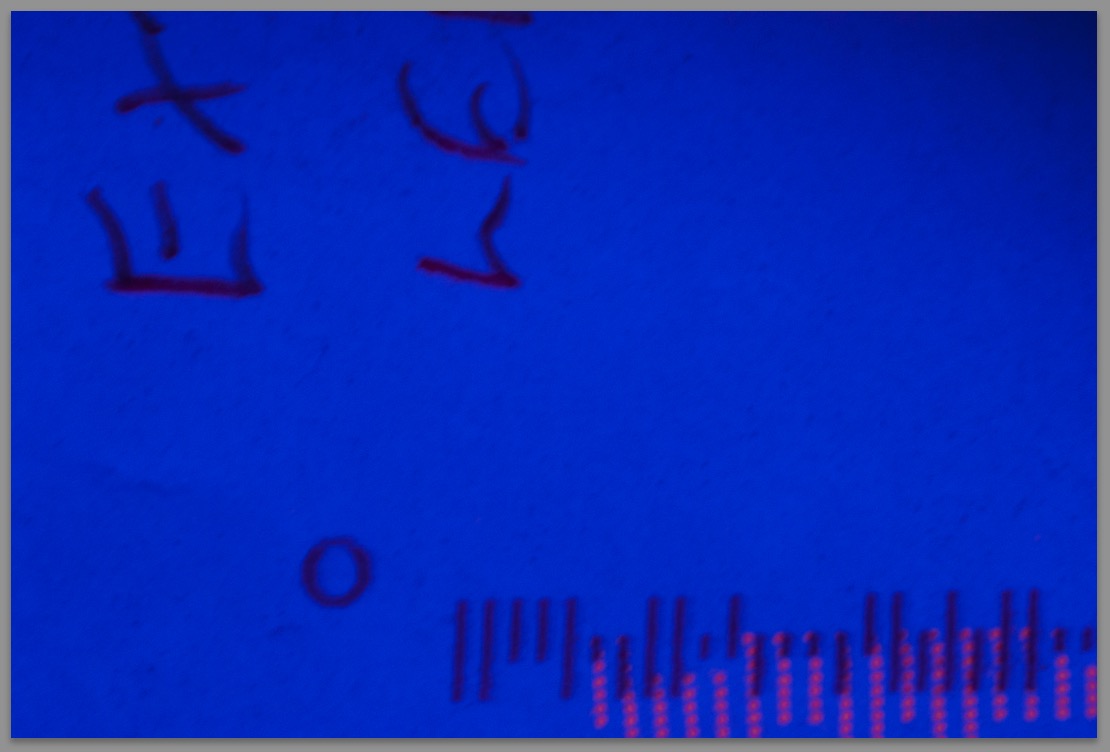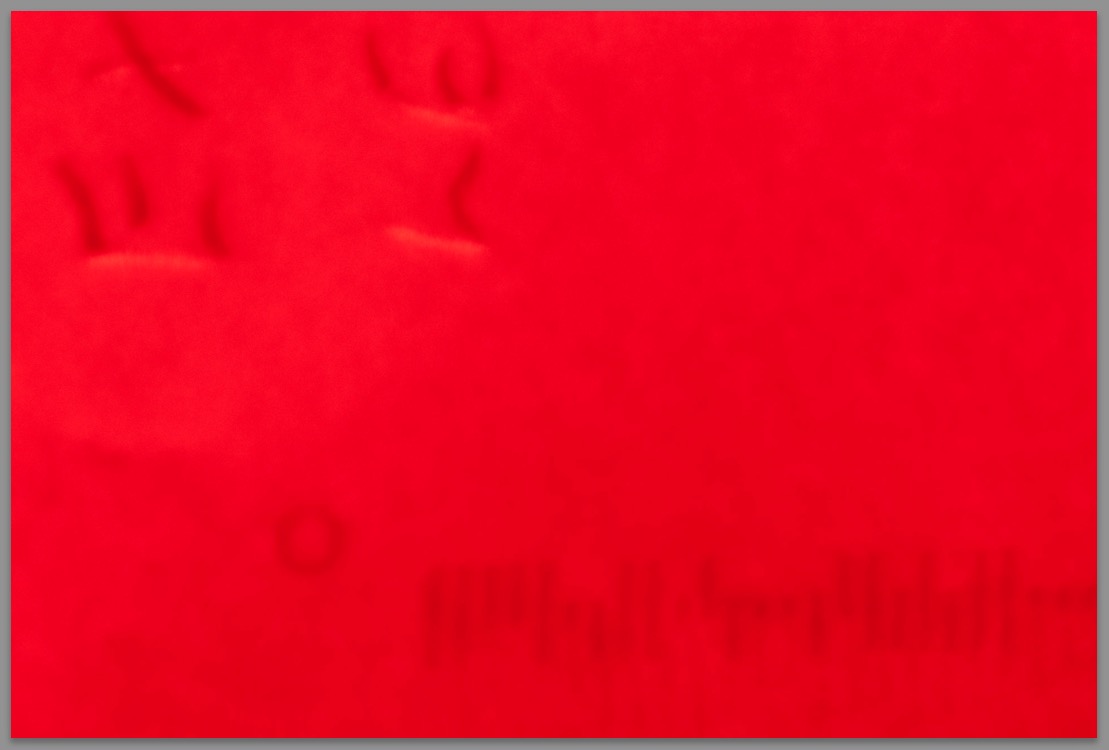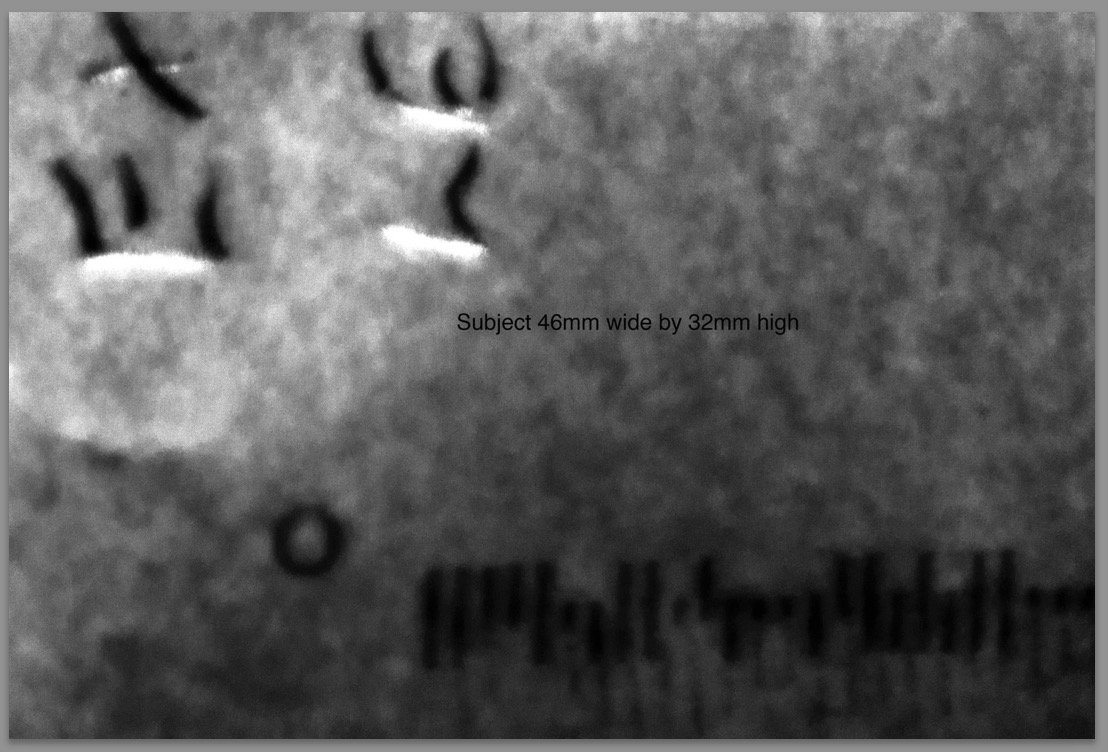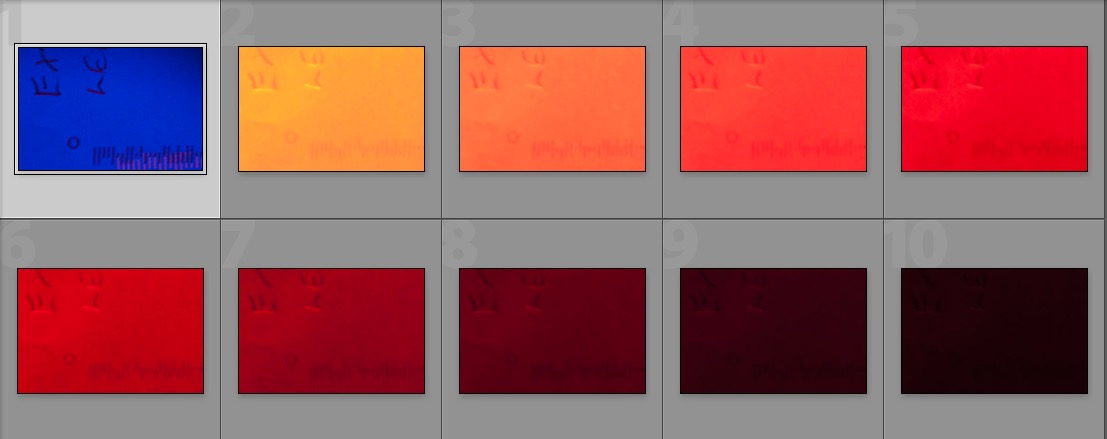The UV side of things.I have three main concerns:
1 - Reasonably sharp images.
2 - Reasonable transmission of UV.
3 - Understanding of the focus shift for this lens.
I have taken some UV exposures with the lens, reverse mounted, somewhat limited because my study is in turmoil due to home alterations and renovation. I am using a converted full spectrum D200 with a clear glass (fluoride?) in front of the sensor. Subject to front element ~600mm, extension rear of lens to front flange of camera: ~250mm.
I photographed an envelope in a dark room lit only by a Nichia 365nm lamp with a fluoride focusing lens. Right now Dandelions are not flowering, here at least. First without a filter. Note the fluorescence of the post code imprint below the barcode, visible as a row of short orange lines, they are not visible on the second and third images filtered by the Venus filter. To me that seems to confirm the Venus filter is doing it's job.
1)

Then I added my Baarder 'U' Venus 300-390nm filter in front of the Schneider lens. This is straight from the camera, unprocessed. The exposure was 1.3 seconds @ f5.6 (wide open).
2)

This is the same exposure desaturated and with adjustments to refine but NOT sharpen the image.
3)

Without proper checking, from these images I thought the focus shift was minimal, however this evening I made a better check and at about 600mm subject to front element, there seems to be about 12mm deepening shift of the focus point.
I set a tape measure at 45º to the axis of the lens and focused on the 300mm mark in the visible light, made an exposure then fitted the Venus filter, made a second exposure and compared the difference in DoF points along the tape. I estimate according to the markings on the tape the difference was 22mm but allowing for the tape being at 45º according to my calliper that means a net focus shift of about 13 to 15mm @ 600mm subject distance.
The yellow tape measure is in visible light, red is in UV.
4)

So, I think I have at least partly answered some questions. The images seem to me to be reasonably sharp, I think the transmission of UV is pretty good with an exposure time of 1.3 seconds @ f5.6 for what I consider to be an optimal exposure and I have a rough starting point for focus shift. In the past I have used the bottom slide of the PB4 to crank the camera/lens assy forward by say 15mm in search of the best focus point, with a longish lens like this that won't make much difference to the framing.
The thumbnails of the images used to determine the best exposure. the yellow exposure was 10 seconds, through to the darkest brown at 1/15th second. I selected the bottom left at best exposed @ 1.3 seconds.
5)

Please offer any comments or suggestions as to how I can further refine my research into the suitability of this lens. I can't afford the time right now to make a solid extension to mount the lens the correct way round.
The only thing I can add is that the normally front element of the lens is 49mm Dia. the rear element is 43mm Dia. That might have some bearing on the lack of contrast in the outdoor normal images I posted above. Presumably it will reduce the light gathering capacity of the lens, the loss in element area by presenting the rear element to the subject is 0.23, almost a quarter of the available light lost. (Because the lens is reverse mounted.)